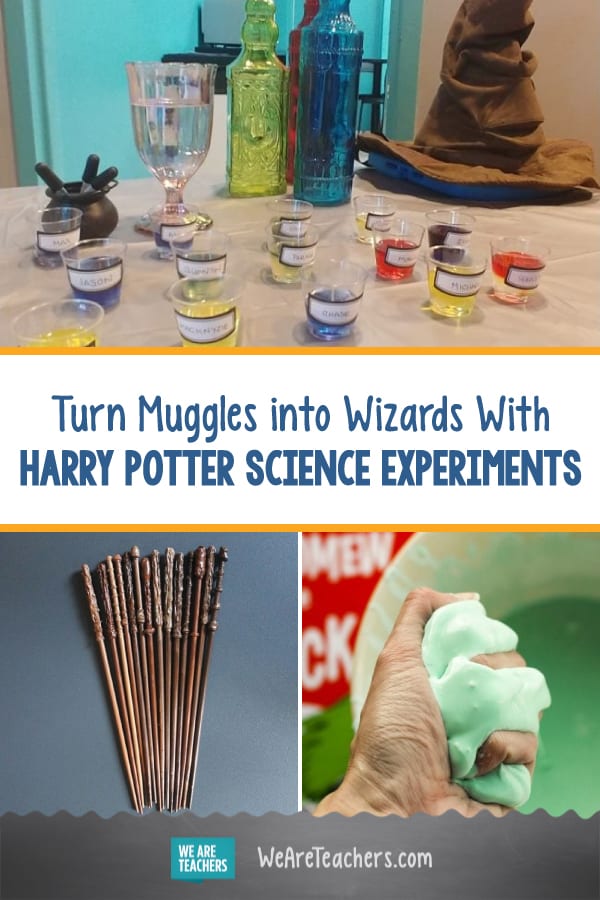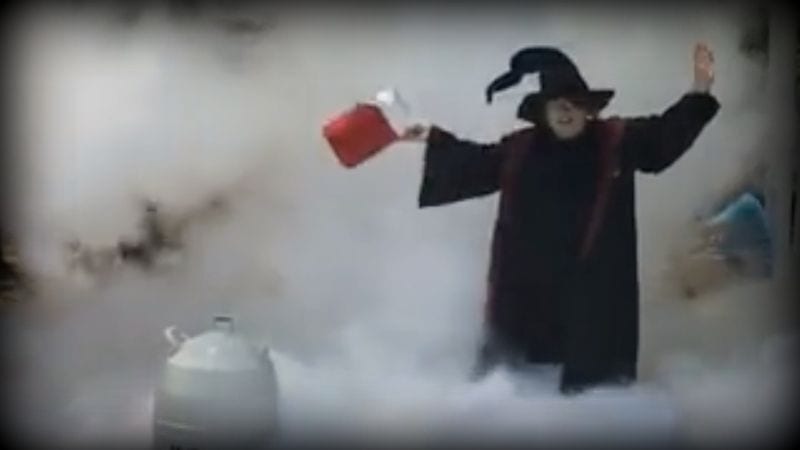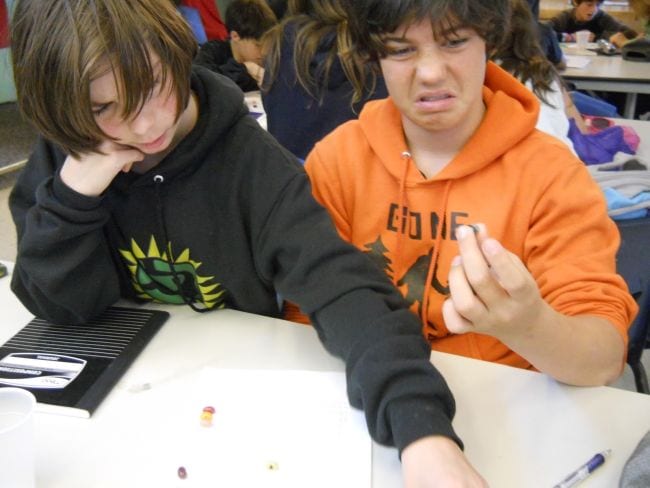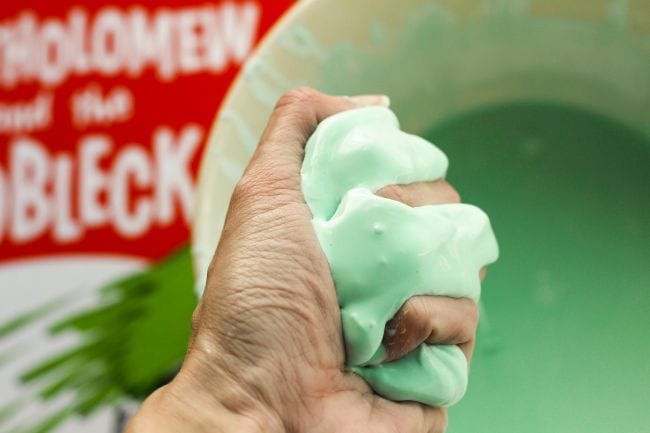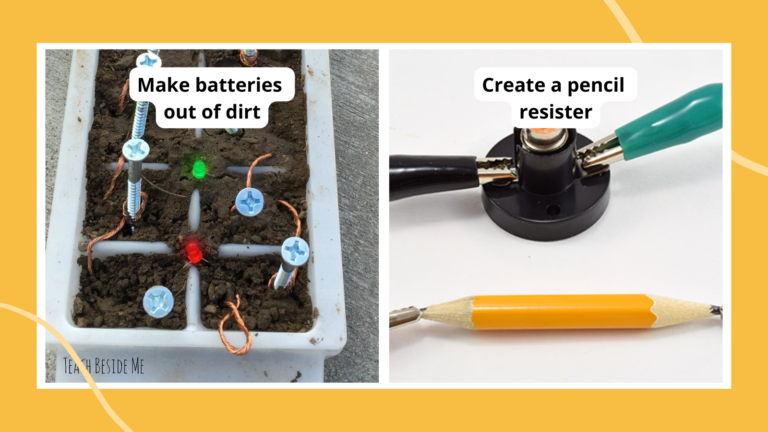The spell of Harry Potter is one that seems destined to last from generation to generation, so take advantage of the books’ allure to teach the science behind magic. We got some bewitching tips from Sara Turner, Director of Awesome (yup, that’s her real title!) at the IMAG History & Science Center in Fort Myers, Florida. Sara runs Harry Potter camps that conjure up record attendance and rave reviews. Here are some of the Harry Potter science experiments and projects she uses along with other ideas from around the web. Accio learning!
Just a heads up, WeAreTeachers may collect a share of sales from the links on this page. We only recommend items our team loves!
Set up your Harry Potter science classroom.
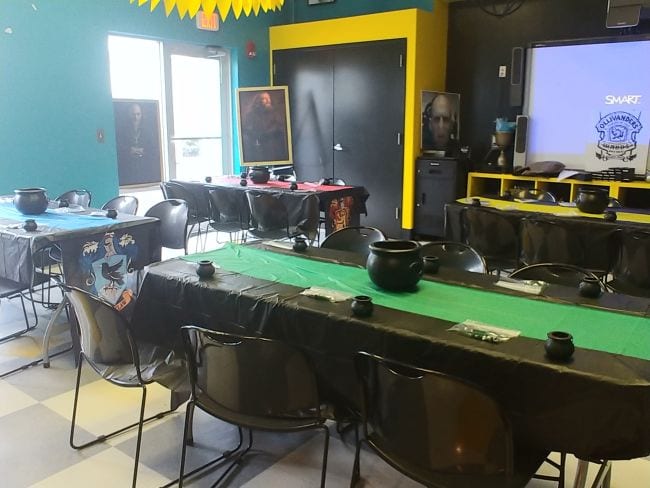
Turn your classroom into Hogwarts with a few simple touches. Use colored table runners to represent different houses. Give each student their own plastic cauldron (watch for them in stores around Halloween). Put up some of these Harry Potter bulletin boards or go all out like this magical teacher. Setting the atmosphere makes everything a little more fun!
Start with a sorting goblet.
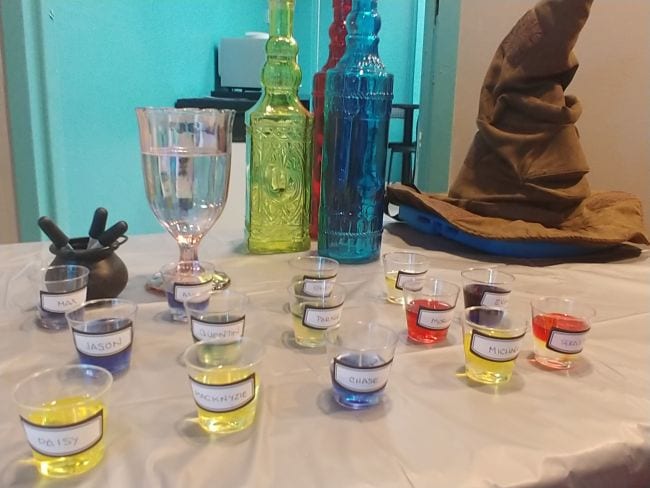
Sort your students into their houses by using chemical reactions. Each student receives a cup that contains a small amount of clear liquid. Then they add more liquid from the “sorting goblet” to the glass. Watch their astonishment as different colors appear! The magic is in the chemicals you’ve hidden in each glass in advance, activated by the special chemical in the goblet. Get all the supplies you need with this kit from Carolina Biological.
[contextly_auto_sidebar]
Make some magic wands.
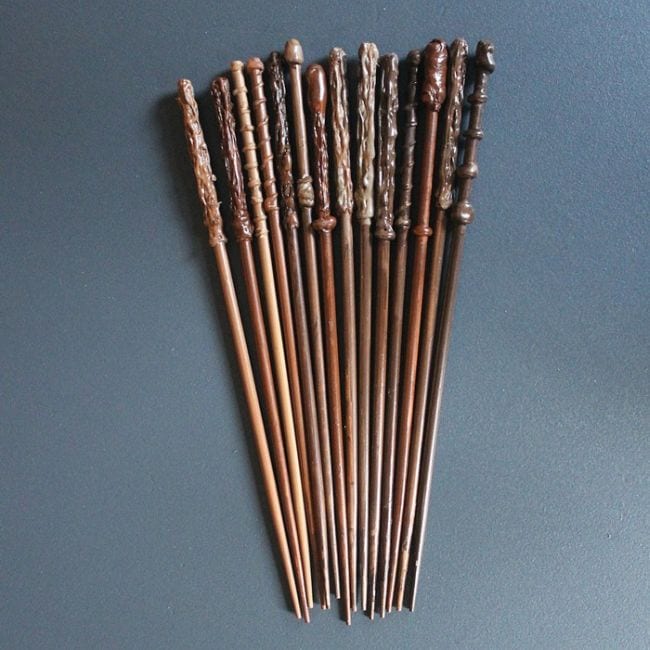
There’s no real science involved here, but every Hogwarts student needs a wand! Make them using chopsticks, hot glue, and paint, using these instructions from Boxy Colonial. Teachers should do the hot glue part in advance, creating the handles. Then kids paint them however they like and use them for their Harry Potter science experiments.
Build circuits to cast Lumos and Nox.
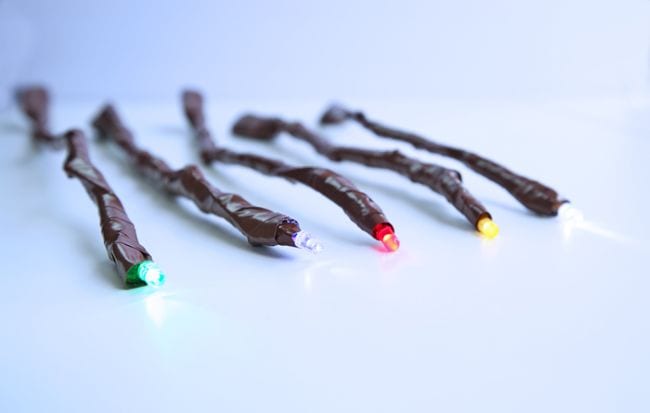
Kick your magic wands up a notch by adding simple circuitry and a small light. Babble Dabble Do shows you how.
Invest in a coding wand.
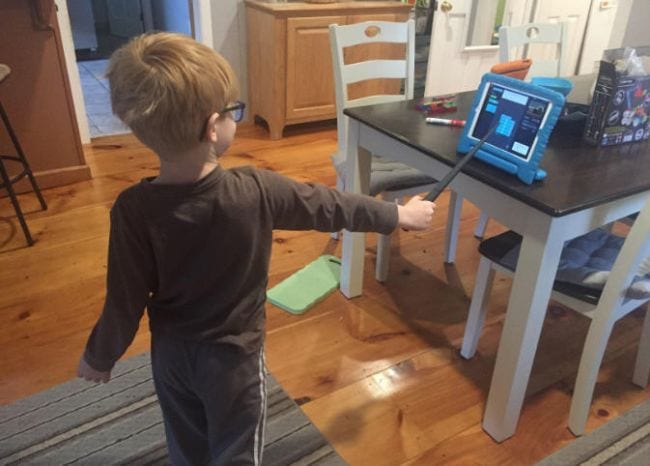
The Kano Harry Potter Coding Wand helps kids learn basic coding skills as they build a wand that responds to movement. No need for muggles to feel intimidated—the kit comes with clear instructions that anyone can follow to create Harry Potter science magic.
Create an “invisibility cloak” with refraction.
When Harry Potter dons his invisibility cloak, he becomes invisible to those around him. In the disappearing penny experiment, water poured into a cup seems to make the penny invisible. It seems like magic, but it’s really all about refraction of light. Maybe that’s how Harry’s cloak worked too!
Then use refraction to perform Revelio.
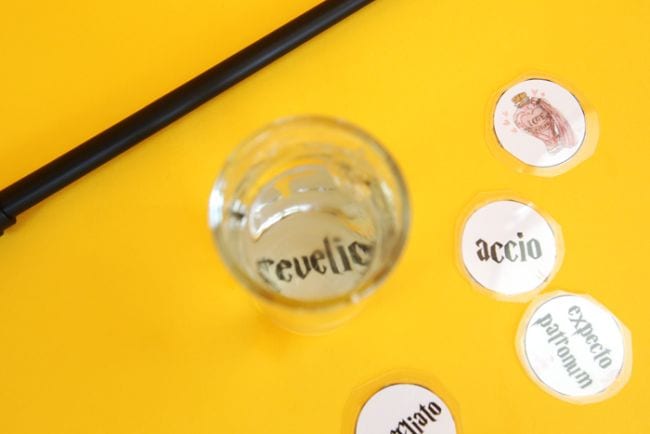
That same light refraction can be used to reveal objects as well, known to wizards as the Revelio spell. Learn how it’s done at Babble Dabble Do.
Use static electricity to cast Wingardium Leviosa.
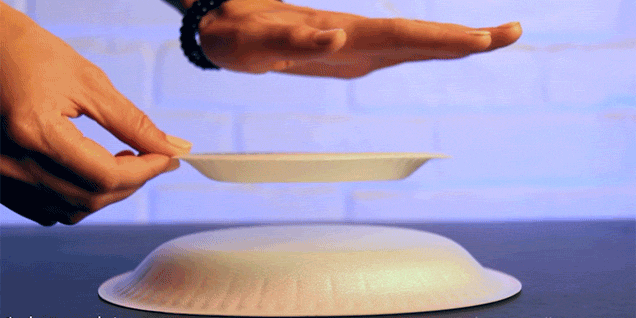
Wizards shout “Wingardium Leviosa!” when they want something to levitate. Static electricity has the same effect! Check out this video for nine simple static electricity demos you can turn into Harry Potter science.
Pass out a potions handbook.
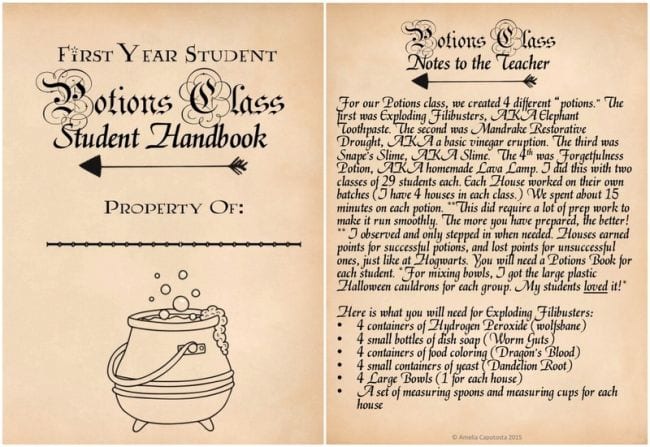
There are so many amazing chemical experiments you can turn into Harry Potter science “potions” that it’s hard to know where to start. Where the Wild Things Learn has a terrific free printable for student wizards and professors that includes Exploding Filibusters (commonly known as Elephant Toothpaste) and three other classic experiments with a magical twist.
Send magical messages in glowing invisible ink.
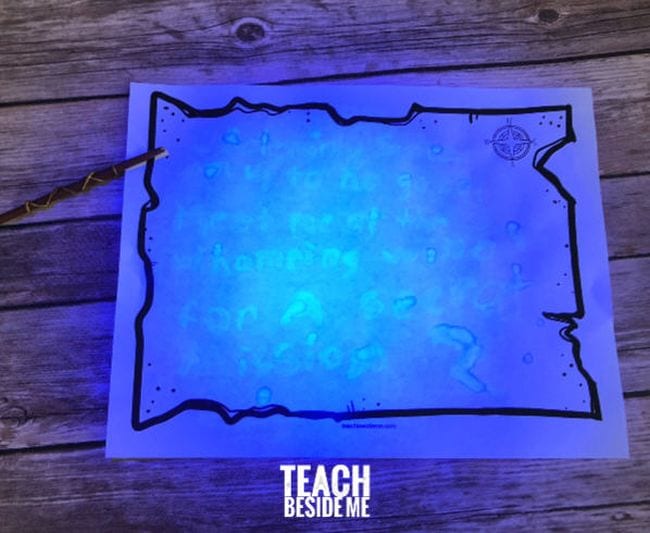
Tom Riddle’s diary and the Marauder’s Map both used invisible ink made visible by magic. You can perform the same science magic using the phosphorescence of laundry soap under a UV light. Learn how from Teach Beside Me.
Go stargazing and learn about Jupiter’s moons.
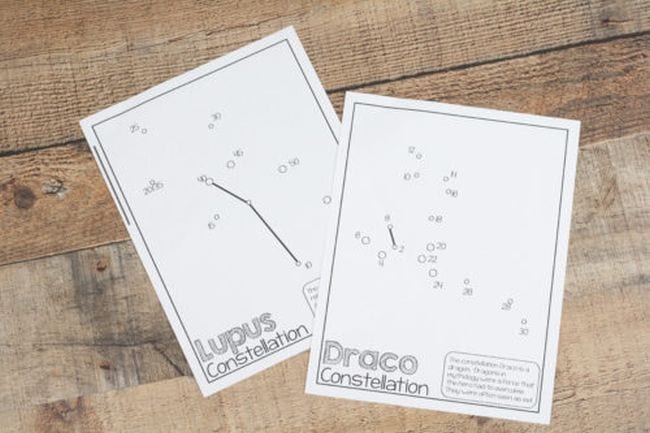
Hogwarts students spend plenty of time studying the stars in astronomy. Visit Royal Baloo to get free printable connect-the-dots star charts for Lupus, Draco, and Sirius. Then challenge your students to learn about Jupiter’s moons, just like Harry and his friends do in Order of the Phoenix. Have them paint rocks to represent the different moons.
Blow up a balloon with Engorgio.
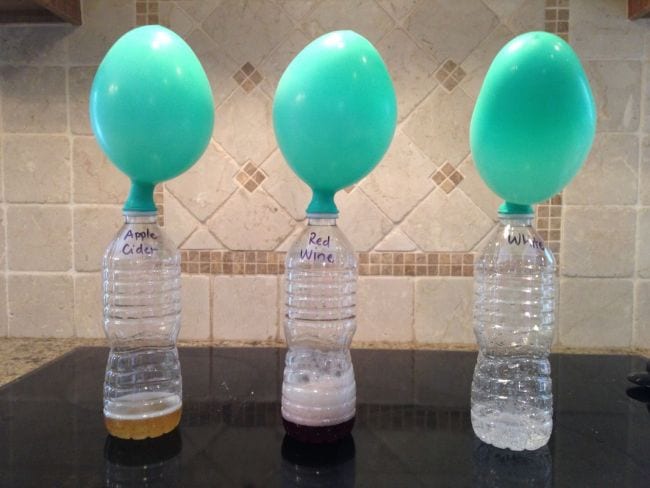
Teachers have been using this classic acids and bases demonstration for ages. Give it a Harry Potter science twist by telling kids they’re learning the Engorgio charm (the same one Dobby used to inflate good old Aunt Marge). Learn how it works from Science Night.
Peer into a dry-ice-bubble crystal ball.
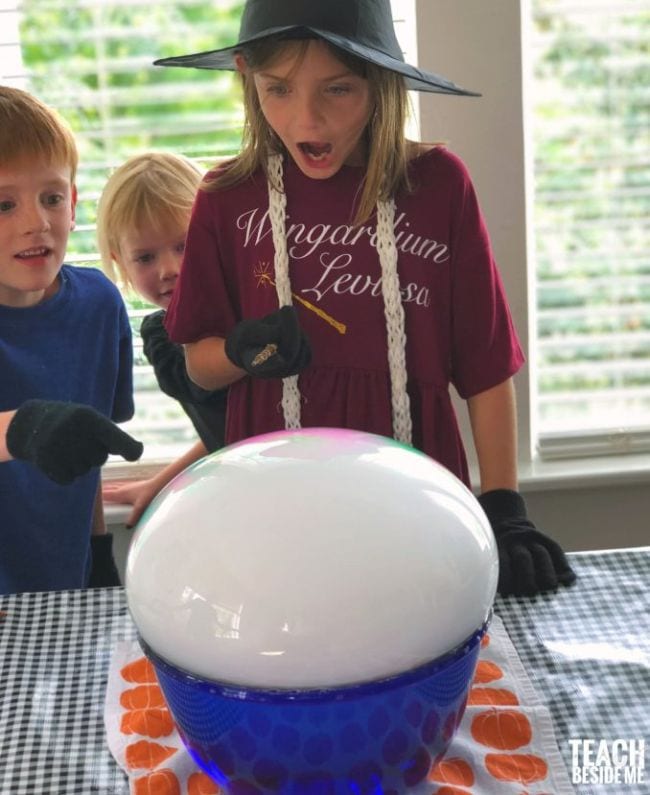
In Professor Trelawney’s divination class, student wizards learn to tell the future from a crystal ball. Use the science of surface tension and dry ice to create your own crystal ball; watching it grow will be magical, even if you can’t see the future! Teach Beside Me shows you how it’s done.
Demonstrate Incendio by Boyle-ing water.
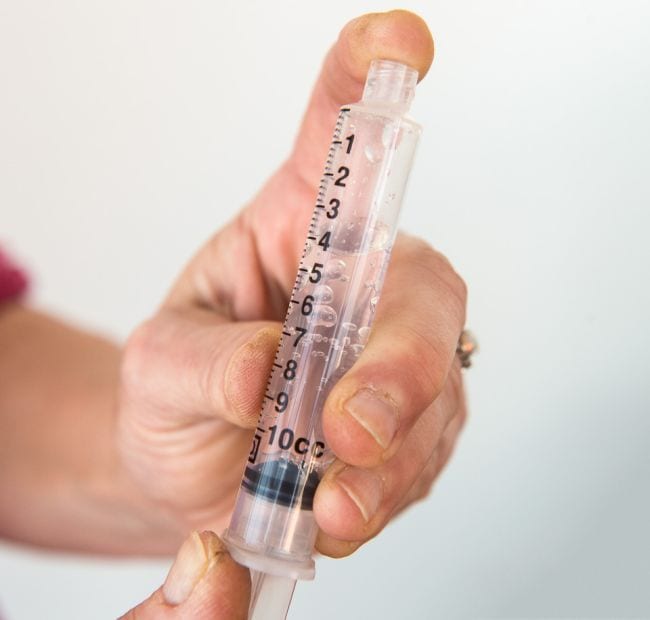
When wizards want a cup of tea, they don’t have time to wait for the kettle to boil. They simply cast Incendio, and water starts simmering instantly! You can copy this magic with the science of a Boyle’s law demo, which uses pressure to boil water at room temperature. Find out how it works at Exploratorium.
Snack on Bertie Bott’s Every Flavour Beans to learn dichotomous classification.
Bertie Bott’s Beans are familiar to every Harry Potter fan! (Who can forget poor Dumbledore chomping down on an earwax-flavored bean?) Fortunately, you don’t have to visit Honeydukes to get some; even Amazon carries them now. And they’re perfect for carrying out an experiment in dichotomous classification systems. Learn how to conduct the experiment here.
Brew up some magnetic Troll Bogey slime.
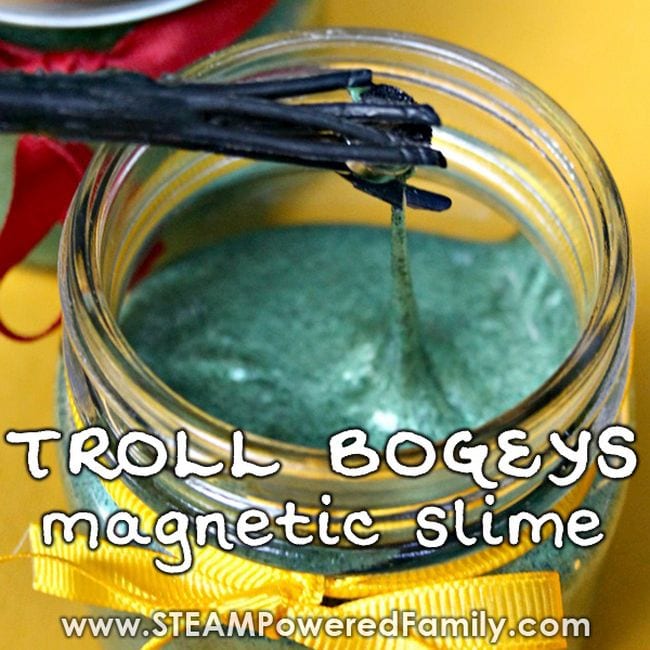
Slime never loses its appeal for muggles and wizards alike. Make some with your students, talking about the way polymers are formed in the chemical reaction. Add iron oxide powder and use a magnet to levitate your slime seemingly by magic! STEAM Powered Family has the full details.
Practice transfiguration with oobleck.
Transfiguration is a great topic for talking about the three states of matter: solid, liquid, and gas. But then there’s oobleck, that oh-so-magical non-Newtonian liquid. Where does it fit into the mix? Mix up a batch with Scientific American to find out.
Engineer a golden snitch catapult.
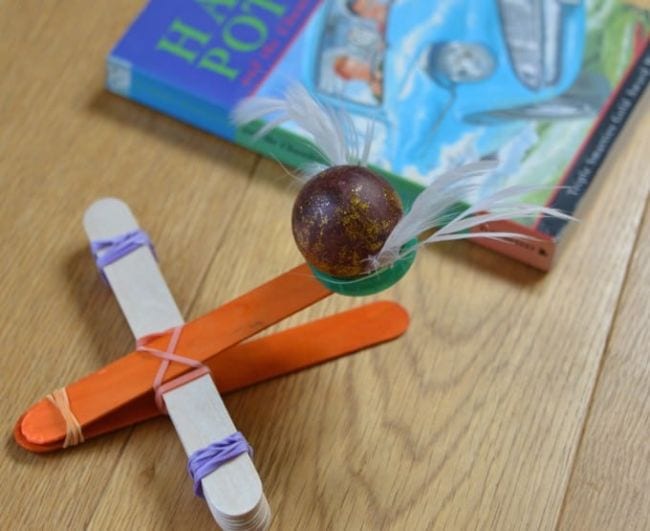
When wizards play quidditch, the golden snitch flies through the air by itself. Your students will have to give it a little help by engineering the best catapult they can instead. Get started with basic instructions at Science Sparks.
Bring a basilisk to life with fire.
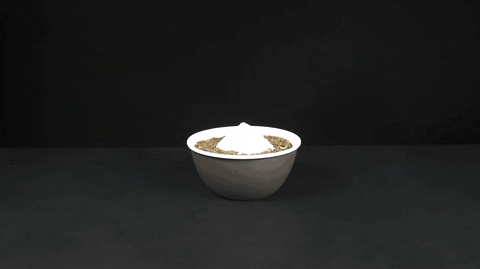
You’ll probably want to head outside for this bit of Harry Potter science! The chemical reaction is caused by heating baking soda with fire. As it burns, it releases carbon dioxide gas, which pushes out the burning sugar “snake.” Learn how the science magic happens from Wonder How To.
Create color-changing flowers for herbology class.
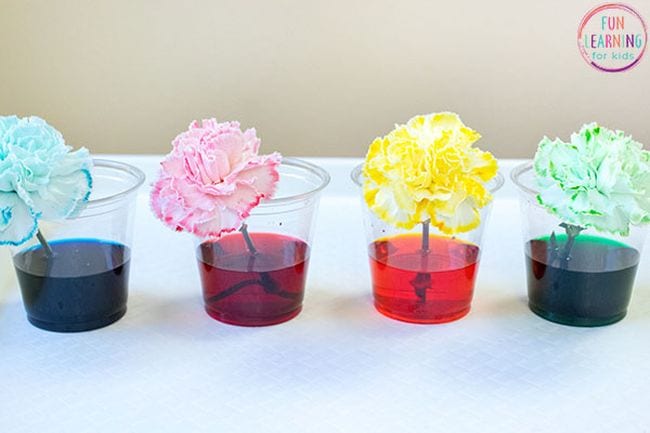
Professor Sprout could probably change the color of flowers by waving her wand, but your students will need a little science. Capillary action will do the trick! See how it works at Fun Learning for Kids.
Mold some puffapod seed bombs.
When you drop a puffapod seed on the ground, plants grow and flower instantly. These seed bombs won’t grow quite so fast, but they’re still a fun science project.
Examine one of Hedwig’s owl pellets.
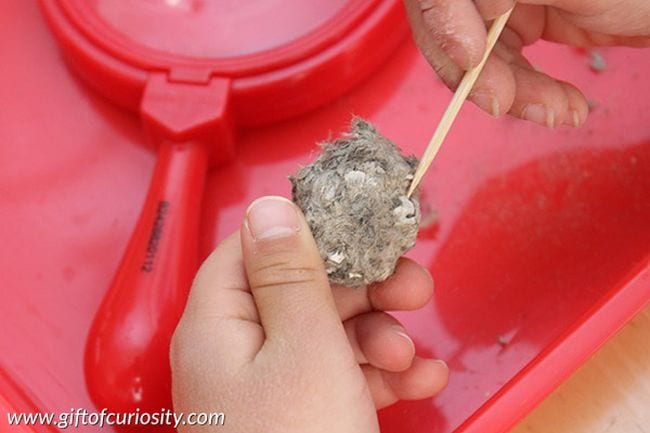
Creep up to the owlery one evening and gather up some owl pellets (or order them from Amazon). Have your students dissect them to learn what Hedwig, Errol, and Pigwidgeon eat when they go hunting at night. See what you might find at Gift of Curiosity.
Watch the Veela dance with homopolar motors.
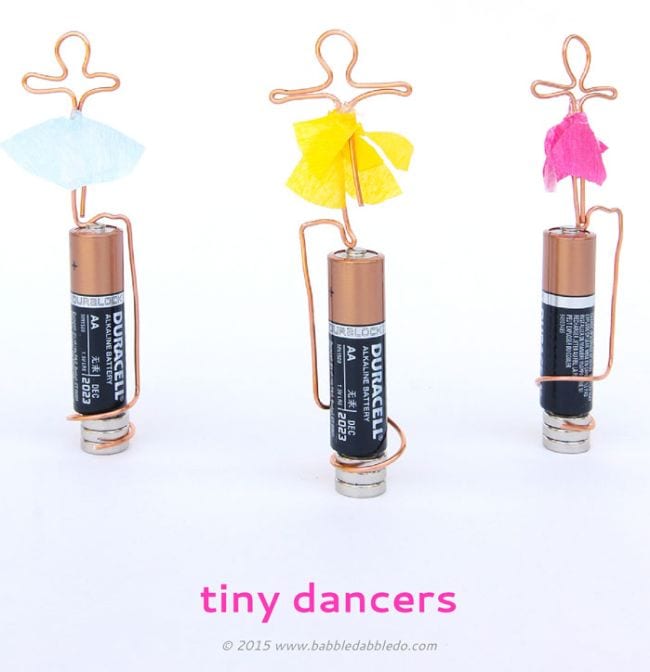
Use copper wire, magnets, and batteries to create tiny spinning dancers like the mesmerizing Veela. Babble Dabble Do shows you how.
Use ice potion to hold fire in your hand.
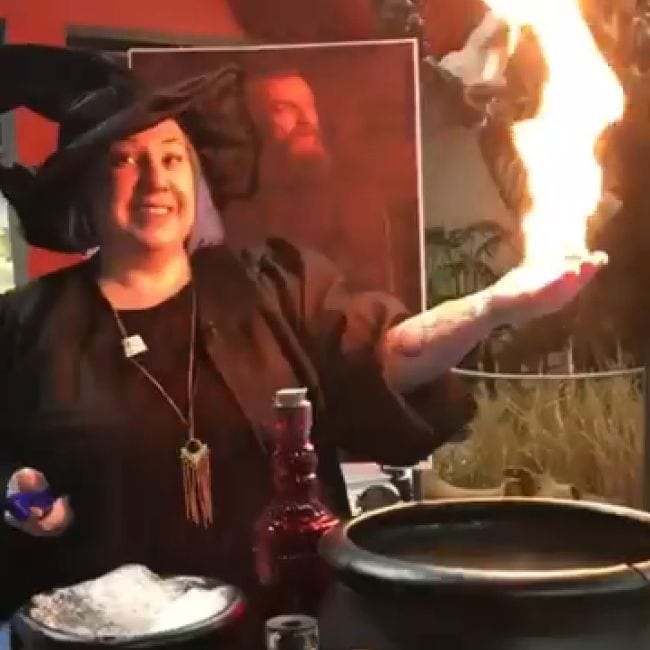
This last Harry Potter science experiment might seem the most magical of all. Squirt a pool of ice potion (hand sanitizer gel) into your hand, and set it on fire. The high alcohol content means the flame burns at a fairly low temperature, and the water in the hand sanitizer will put out the fire after a short time. Feeling nervous around fire? Try it on a hard surface first. Thought Co walks you through the process, so don’t be scared!
How do you turn your muggle students into science wizards? Come share your ideas on the WeAreTeacher Chat Group on Facebook.
Hogwarts professors have a lot to teach us. Check out the 5 Lessons You Can Learn About Teaching from Harry Potter.
